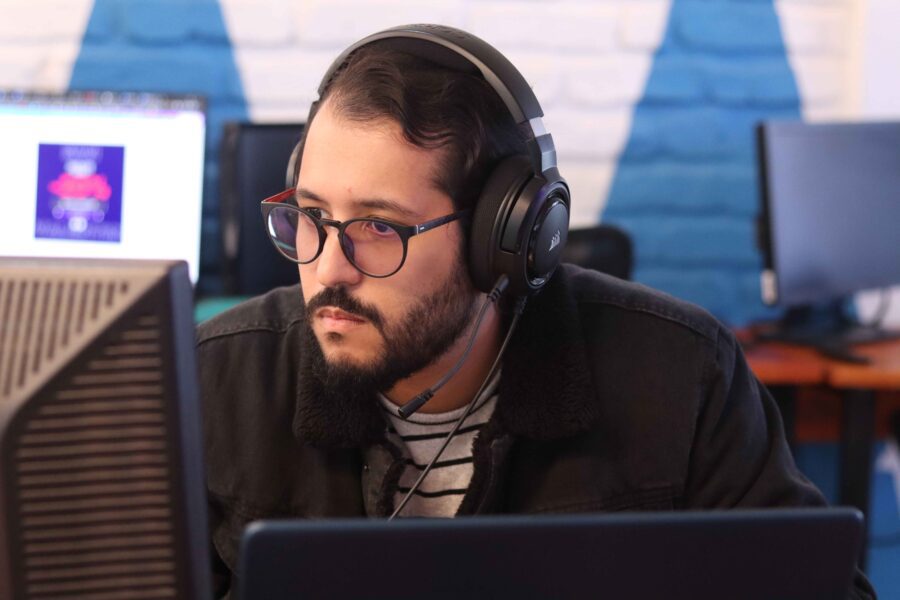Multi-skilled teams include team members who own a variety of skills and knowledge. In these teams, people share their diverse expertise and viewpoints to achieve a common goal.
With this structure, everyone has a purpose and a well-defined role. They all understand what they need to offer the team and the efforts they need to put in. Also, they all know what skills they bring to the table. This is how all team members understand the value they offer.
The multi-skilled team structure offers many benefits. From stronger decision-making processes to reaching the main goal. Among their pros are:
- Greater innovation
- More creativity
- Improvements in effective communication and productivity.
- More efficiency
- A smaller margin of error
- Greater sense of belonging to the organization
There are many elements to consider when creating this type of team, and in this article we’ll tell you about some of them.
One of the first things we need to mention is that when you bring together a group of diverse individuals with different skills, attitudes, and ways of doing things, it’s no surprise that conflicts sometimes occur.
Members of a multi-skilled team will have different qualifications, training, and ways of working. Thus, a better understanding between team members goes a long way in easing tensions that may have arisen in the workplace.
Team Comparisons

As tasks, functions, and roles often need different personality types, it is necessary to have people with different focuses and points of view in their work. If everyone can give the best of themselves, we have to be willing to request different things from each one and cohabitate with different personalities.
In many organizations, there is a tendency to discourage comparison because the differences people might have may not coexist very well with each other. However, if a team wants to get the best out of each person, we must ensure that everyone is dedicated to what they know how to do best, and this means understanding the differences between everyone. Thus, the possible shortcomings of each one are counteracted by the strengths of another member of the team.
Talent And People Diversity
It is useful to rely on the DISC (Dominance, Influence, Steadiness, Compliance) test systems. It helps to define the different personality profiles based on their work orientations. This is accurate for technical environments in small companies where people management systems are not used.
To form teams within a company, we must take these qualities into account in the selection processes. The final success of a business project ends up having an important weight between academic training or work experience of the future organization’s members.
They Need To Know How To Learn New Skills
Let’s think about the people that write emails. Someone may know how to write and even know what an email is, but that doesn’t mean they know how to write emails in the right way. Nor do they know how to write them in different contexts or for different audiences and purposes.

In other words, being able to write is not the same as having communication skills. The competencies needed involve knowledge, attitudes, skills, and values. This means that people are not only expected to use grammar appropriately when writing an email but also to show respect and empathy.
While there are many professionals who know a lot about their specific degrees, a project will need professionals who know more about different areas so information can be intertwined and goals can be achieved. This is when metaphorically, the email example appears.
The email is the project; the competencies needed to write an email will be the professionals who integrate the team. That’s how multi-skilled teams work.
What Does A Multi-skilled Team Needs?
Communication
This is one of the central pieces of multi-skilled teamwork. You must establish clear communication channels so this structure can be highly profitable and the objectives can be met as a team.
To begin with, good communication skills are important, yes. But it’s also about team leaders providing the right tools. Whether it’s Slack, Zoom, or other team communication platforms. In this way, each individual should be aware of the tools available and what are the appropriate times and situations to use them.
This notion begins with the team leader, they are the one who should anticipate problems and proactively handle complications.
Coaching is an effective method when the team is working based on goals and deadlines. This approach includes benefits like improving communication and problem-solving skills among team members, and it can also increase the quality and quantity of work.
Roles and Rules

Defining roles and responsibilities is critical to building a strong foundation for a multi-skilled team. When roles are established from the start, everyone knows what they should do and when. If there are no defined roles, there could be an overlapping of functions.
This can cause team members to risk repeating or doing someone else’s work. An effective multi-skilled team seeks everyone’s opinions, and this should be present from the very conception of the project. Involving the team in setting the right rules for each project will boost morale. It can also help build stronger teams as well as help ensure that people follow these regulations.
Goals
Team leaders should work with members from the beginning to determine the core goals. They should also define key milestones and parameters that allow the team to analyze the project. Determining if they are on track to achieve those milestones is fundamental. This may sound obvious, but it’s important to say. All projects should have clear goals and milestones that exist in pursuit of the goals of the organization.
Resources
Team leaders have to think about the resources each individual and department needs to fulfill their responsibilities. Even as each team member brings unique skills and talents to contribute to the bigger picture, the team must have the right resources to be able to do their jobs and effectively assume their roles.
Creating multi-skilled teams for your projects might still seem challenging, but that’s what we’re here for. Just let us know what you need and we’ll find the best freelancers for your projects or for permanent positions in your company!
See more articles by Carla Fattal.






